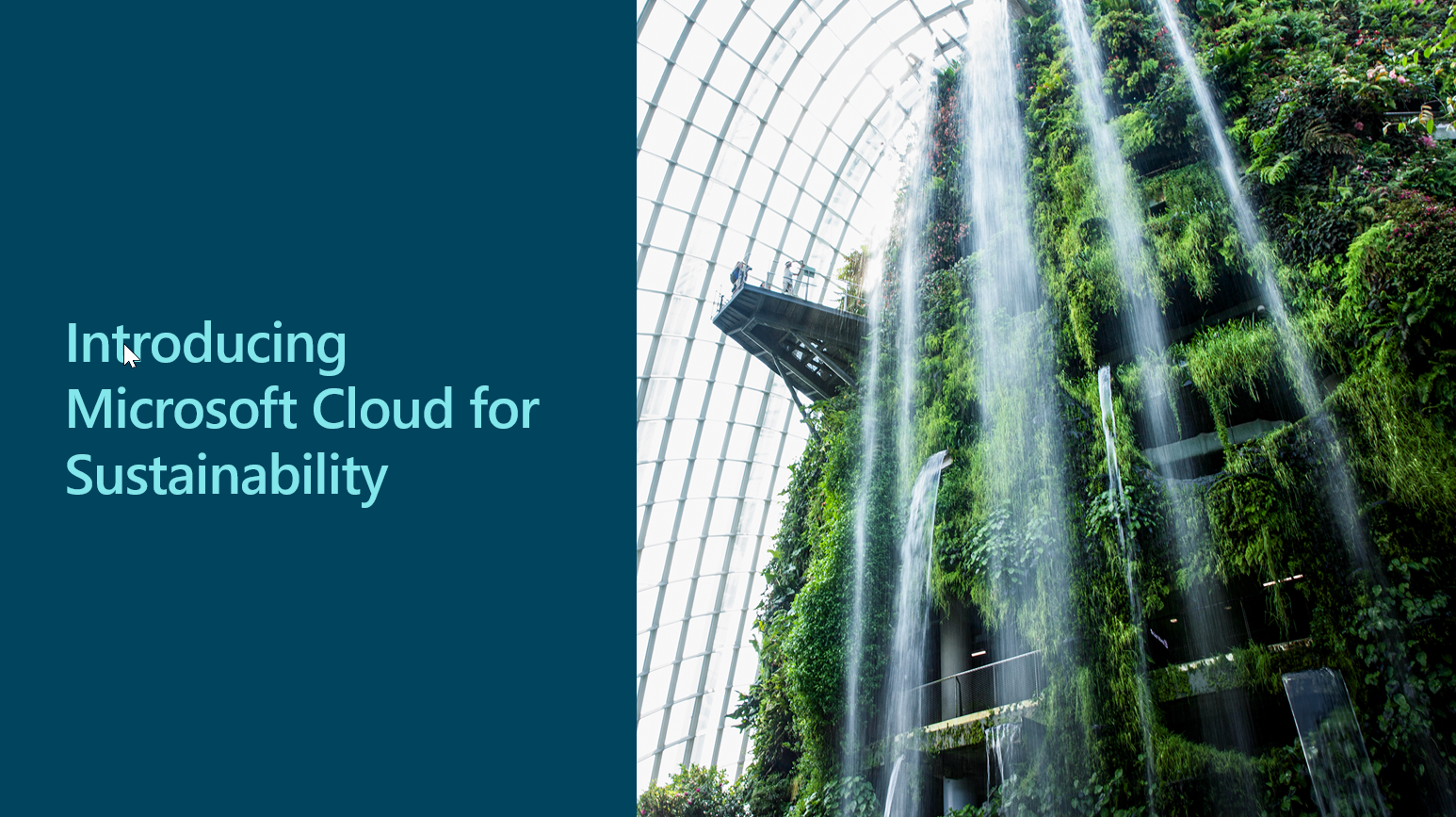Microsoft Cloud for Sustainability
Microsoft Cloud for Sustainability empowers organizations to accelerate sustainability progress and business growth by bringing together a set of environmental, social, and governance (ESG) capabilities across the Microsoft cloud portfolio plus solutions from our global ecosystem of partners.
Together, we’re enabling organizations to gain the transparency and insights they need to manage their environmental footprint, embed sustainability through their organization and value chain, and create new value in a changing landscape. (continue reading here)
Resources
Getting started
- Partner readiness material https://aka.ms/mpnsustainability
- Our Microsoft journey: 2021 Environmental Sustainability Report | Microsoft CSR
- Our solutions: Microsoft Sustainability - Products for a Sustainable Future
- Docs: Microsoft Cloud for Sustainability documentation | Microsoft Learn
- Common data model
- A set of learn modules that we have curated for you
- Extend Microsoft Cloud for Sustainability (⬅️ Great for partners that want to build solutions on top of Cloud for sustainability!!)
understanding carbon accounting
Carbon reporting with/on Microsoft services:
- https://aka.ms/MicrosoftEmissionsImpactDashboard: Simplify carbon reporting with easy access to report on Scope 3 emissions from your use of Azure cloud services
- https://aka.ms/M365-Emissions: Tracks emissions related to using Microsoft 365 core cloud services including Exchange Online, SharePoint Online, OneDrive, Microsoft Teams, and other services
News
- 12 Oct 22: What’s new with Microsoft Cloud for Sustainability - Microsoft Industry Blogs
- Ignite: https://aka.ms/IgniteCollectionBRK60
- Cloud for Sustainability water data model (Preview)
- Microsoft will be carbon negative by 2030
- Microsoft’s commitment to sustainability
Environments for experimenting and giving demos
There are 2 ways to get started:
- The first is a (30 day) trial, which comes with demo/sample data: Free Trial | Microsoft Sustainability Manager (in case no tenant: Microsoft Sustainability Manager trial FAQ | Microsoft Learn)
- [Preferred option] Request a sandbox environment via https://experience.dynamics.com/requestlicense/.
- fill out all the fields
- For promotional offer, select Discounted Offer (Available to all MPN partners) (unless one of the other offers apply to your org)
- For License, select Microsoft Cloud for Sustainability
- Review the “fine print” and submit
With regards to option 2: ➡️ This option is for SI/ISV Connect partners to obtain free or discounted non-production environment licenses with Biz Apps and Power Platform products to learn, test, and deliver end-to-end customer demos with their own solutions. These offers are to be used only on partner tenants, never on customer tenants!!
Learning
| Product | Role | Learning Path | Note |
|---|---|---|---|
| Cloud for sustainability | Everyone involved | aka.ms/MC4SFundementals | Anyone going to work on sustainability (and anyone who needs to understand sustainable development) |
| Power Platform | Functional | 1. PL-900: Fundamentals 2. PL-200: Functional Associate 3. PL-600: Solutions Architect | Start point as Cloud for Sustainability is built in Power Platform |
| Power Platform | Developer | 1. PL-900:Fundamentals 2. PL-100: App maker 3. PL-400: Developer Associate | Start point as Cloud for Sustainability is built in Power Platform |
| Microsoft Cloud for Sustainability | All consultants | aka.ms/GetStartedMC4S | Learn MS Cloud for Sustainability |
| Sustainability Manager | All consultants | aka.ms/LearnSustainabilityManager | Learn Sustainability Manager |
| Power BI | Data analyst | PL-300: Data Analyst Associate | |
| Azure Data Platform | Data Engineer | 1. DP-900: Data Fundamentals 2. DP-203: Data engineer | |
| Data Engineer | aka.ms/IntegrateWithMC4S | Data platform integration between MC4S & Azure Synapse | |
| (Enterprise) Data analyst | 1. DP-500: Enterprise data analyst | (Closer to integration with date engineer) |
Azure sustainability guidance: Get started with Azure sustainability guidance for the Well-Architected Framework (WAF) today
